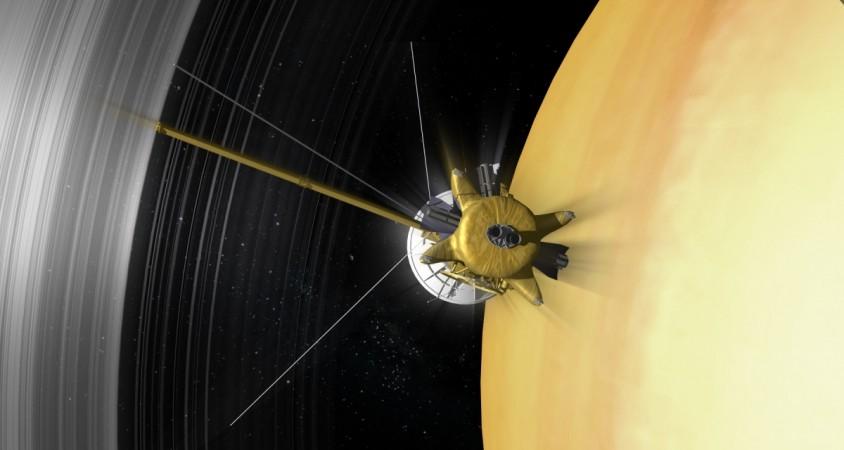
NASA's robotic Cassini spacecraft's mission to explore Saturn's rings and moons has begun. This will be the first mission to delve deep into the mysteries of Saturn.
Termed the "Cassini's Ring-Grazing Orbits", this mission aims at exploring the rings of the gas giant, which are the largest in the solar system.
"We're calling this phase of the mission Cassini's Ring-Grazing Orbits, because we'll be skimming past the outer edge of the rings," said Linda Spilker, Cassini project scientist at NASA's Jet Propulsion Laboratory, in Pasadena, California.
"In addition, we have two instruments that can sample particles and gases as we cross the ringplane, so in a sense, Cassini is also 'grazing' on the rings."
Cassini's journey to investigate Saturn's sring will start on November 30, 2016 and go on till April 22, 2017. The spacecraft will be carrying out its analysis high above and under the poles of Saturn, 20 times a week.
The outer edges of Saturn's rings will also be examined by Cassini. The rings will be sampled for meteor impacts while they are backlit by the Sun.
"The scientific return will be incredible. We'll be studying here what we just couldn't do any other place," Spiker told Science World Report.
According to NASA, the spacecraft will climb above Saturn's north pole and then pitch outside the thin outer ring of Saturn -- called the 'F ring'.On April 22, 2017, Cassini will journey to explore the inner edge of the rings.
The craft will make daring dives between the surface of Saturn and the inner edge of the rings, this mission is aptly titled the 'Grand Finale'.
The craft will take six days to complete each of the 22 orbits. Once that's done, the spacecraft will head into the upper atmosphere of the planet and burn up, marking the end of its mission.
Cassini has spent 20 years in space thus far; its mission is scheduled to finally end on September 15, 2017 at 1:07 pm GMT (5:07 a.m. PDT).
Here's all you need to know about the Cassini mission
- The spacecraft will look to unearth crucial data for researchers.
- The rotation speed of the planet will be mapped by the spacecraft with the help of detailed maps regarding magnetic and gravity fields, made by Cassini.
- The mission aims at enhancing our knowledge regarding the origin and amount of material present in the rings.
- The icy ring particles, which are funnelled into Saturn's atmosphere by its magnetic field, will be sampled.
- Ultra-close HD photographs of Saturn's clouds and rings will be taken by the cameras on Cassini.
















